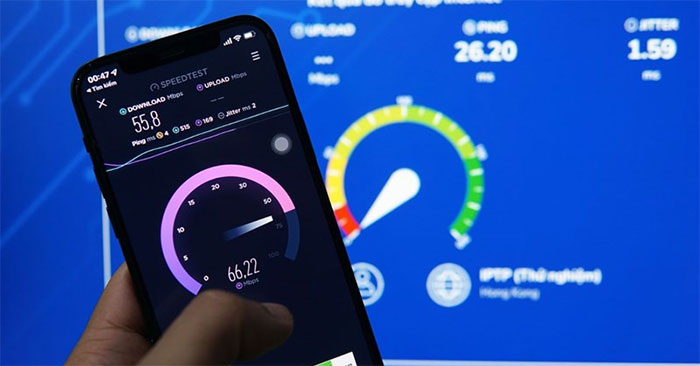Users can only use a maximum of about 40% of the package's network speed
A study by RealSpeed, commissioned by the New Zealand Trade Commission, shows that many people are spending money to buy high-speed Internet packages but the actual usage efficiency is much lower.
Specifically, according to RealSpeed's report, actual Internet speed can be up to 60% lower than what is written on the package specifications. This means that in reality users can only use a maximum of about 40% of the package's network speed.

Before reaching the above conclusion, RealSpeed conducted tests including testing transmission speed for wireless routers or modems of households, analyzing Internet speed on user devices. However, the company did not announce the number of devices and households included in the survey.
Tristan Gilbertson, in charge of the telecommunications department at the New Zealand Trade Commission, said that users do not always receive the connection speed commensurate with the money spent, and wifi performance is the reason why people users pay more than they receive in return.
Gilbertson gives an example of the Fiber Max package for speeds of 878 Mbps that is popular in New Zealand. But in reality, with this package, devices usually only receive an average of 318 Mbps.
Gilbertson said that when using an old device or with technology that is not enough to exploit the full power of the package, your connection will be as imperfect as a Ferrari driving on a speed-limited road.
Ben Oakley, head of telecommunications market performance at the New Zealand Trade Commission, advises that if a user's supporting devices are not taking full advantage of the speeds that the package is providing, they should You may consider downgrading your package.
When you feel the network is slow, instead of immediately contacting the network operator to buy a new package, Ben Oakley believes that users should consider and do the following:
- Before upgrading the package, users should consider whether it is necessary and whether they can take advantage of the performance for the money spent? For example, plans above 300 Mbps will be suitable for those who need to transfer large files, but not for home users.
- Check if the router placement is ideal. The device needs to be in the most central location possible, without walls or other objects blocking or interfering with it to achieve the highest performance.
- Users can use Ethernet cables for fixed devices or in areas far from the router.
- Users also consider buying a new device to replace if the router is too old to maximize the speed of the package.
- Receiving devices such as smartphones, computers, and TVs cannot receive high-speed data from the router if they are too old. Therefore, if within allowable limits, users should also replace them.
You should read it
- Instructions for registering V90 package is only 90k to receive the super 3-in-1 integration right away
- Package in Python
- How to Speed Up a Slow Internet Connection
- How to use winget - New Package Manager for Windows 10
- What is a package dependency in Linux?
- Exciting with World Cup MobiFone launched a great data package
 How to fix laptop error not connecting to WiFi, fix laptop error not receiving WiFi
How to fix laptop error not connecting to WiFi, fix laptop error not receiving WiFi Some ways to improve Wi-Fi connection and speed up WiFi
Some ways to improve Wi-Fi connection and speed up WiFi What is 1.1.1.1? How does it speed up the Internet and secure data when browsing?
What is 1.1.1.1? How does it speed up the Internet and secure data when browsing? How to create WiFi Hotspot in Ubuntu
How to create WiFi Hotspot in Ubuntu How to turn an old router into a wireless bridge
How to turn an old router into a wireless bridge 6 best DNS servers to improve online safety
6 best DNS servers to improve online safety